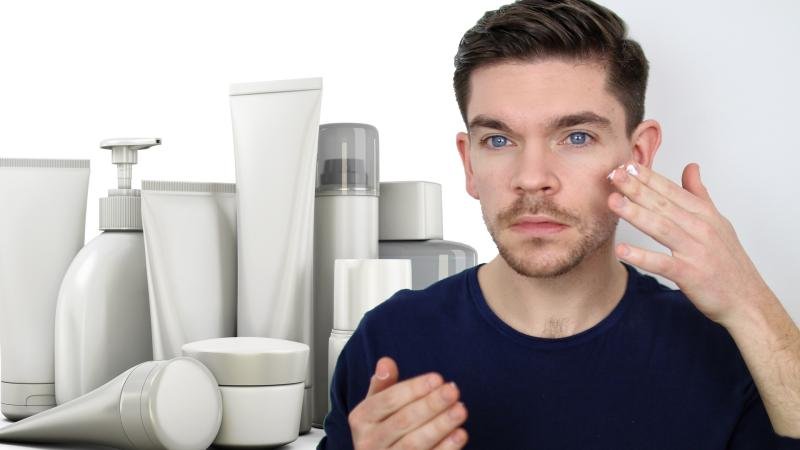The Rising Tide of Men’s Skincare in South Korea
In the realm of beauty and grooming, South Korea has long been recognized for its innovative skincare products. Traditionally dominated by women, the skincare market is witnessing a transformative shift as South Korean men embrace self-care routines. The men’s skincare segment is swiftly carving its niche, evolving from an overlooked market to a burgeoning powerhouse.
Market Growth and Projections
Recent forecasts indicate that the Korea men’s skincare market is on track to reach a valuation of USD 1.2 billion by 2025, with projections soaring to USD 3.7 billion by 2035. This significant growth translates to a compound annual growth rate (CAGR) of 11.04% over the next decade, showcasing a seismic shift in grooming habits across diverse age groups.
Changing Masculinity Norms
The evolving concept of masculinity plays a crucial role in this market expansion. Younger South Korean men in their 20s and 30s are more conscious about their image, driving the normalization of skincare routines. While previous generations might have shied away from such practices, the current wave embraces everything from basic moisturizers to elaborate multi-step regimens.
Key influencers such as K-pop stars and actors are pivotal in this cultural transformation. Their engagement in skincare promotions has desensitized many men to once-taboo practices like sheet-masking, eyebrow grooming, and regular sunscreen application, thereby reshaping daily grooming rituals.
Product Diversification and Innovation
As demand escalates, brands are diversifying their offerings specifically for men’s skin, which often requires different formulations due to its thickness and oiliness. Common introductions to the market include:
- Hydration products
- Pore-tightening treatments
- Anti-aging formulas
- Skin tone correction products
Innovations now feature a mix of natural ingredients and functional cosmetics, often providing dual or triple benefits. Tech-savvy skincare is also emerging, with app-connected devices that monitor skin hydration. The landscape no longer limits men to basic cleansing foams; a broad array of products including BB creams, toners, and serums now populate their shelves.
Retail and Distribution Landscape
The surge in demand has revitalized retail avenues, particularly in e-commerce. Online platforms like Coupang and Naver Shopping are leading the charge with designated men’s grooming sections. Beauty-centric sites such as Olive Young and Chicor are also observing increased male consumer traffic.
Physical stores are not behind, either. Innovations in retail include:
- Pop-up stores
- Gender-neutral display zones
- Male-specific beauty consultants
Additionally, convenience stores and pharmacies are expanding their men’s skincare selections, making access to products increasingly convenient.
Challenges Facing Men’s Skincare Market in Korea
Despite its promising trajectory, the men’s skincare market grapples with several inherent challenges:
-
Gender Stereotypes: Traditional views still link skincare to femininity, particularly among older demographics. This may deter men from adopting skincare routines or purchasing perceived ‘beauty’ items.
-
Market Saturation: The influx of competing brands creates confusion for consumers. Differentiating between products with similar claims becomes increasingly difficult, adding pressure on newer entrants.
-
Price Sensitivity: Many males are cautious about spending, prioritizing budget-friendly products. Economic constraints can limit access to premium options.
- Limited Research and Education: Historically, skincare innovations have focused more on women, leaving many male-specific concerns overlooked. Furthermore, some men lack the guidance to use products effectively, stifling widespread adoption.
Leading Players in the Market
Key industry players shaping South Korea’s men’s skincare landscape include:
- Cosmecca Korea, Co. Ltd
- KBL Cosmetics
- ABLE C&C Co., Ltd
- Adwin Corporation
- L’Oréal S.A
- Unilever PLC
- Clarins Group
- Chattem Inc.
- Clinique Laboratories
- Kiehl’s LLC
Insights on Product Segmentation
Understanding the market’s segmentation helps grasp its full scope:
By Product Type
- Cleansers & face wash
- Facial scrubs & polishes
- Moisturizers & creams
- Serums, oils & treatments
- Shave care
- Sunscreen
By Sales Channel
- Discount stores
- Drug stores & pharmacies
- Multi-brand stores
- Online retailers
- Salon/grooming clubs
- Specialty stores
- Supermarkets/hypermarkets
By Skin Type
- Combination skin
- Dry skin
- Normal skin
- Oily skin
- Sensitive skin
By Source
- Conventional
- Organic
By Price Range
- Economy
- Mid-range
- Premium
By Sub Region
- South Gyeongsang
- North Jeolla
- South Jeolla
- Jeju
- Rest of Korea
Conclusion
The burgeoning men’s skincare market in South Korea reflects a broader cultural shift towards self-care and grooming. As perceptions evolve, brands continue to respond with innovative offerings tailored for men, paving the way for extensive growth. To explore detailed insights and trends affecting this market, consider downloading the comprehensive report.
This market’s dynamic evolution serves as an exciting example of how societal perceptions can spur new avenues of growth in industries traditionally confined to specific demographics. As the landscape continues to adapt and flourish, it will be fascinating to observe the continued impact on men’s skincare habits.


